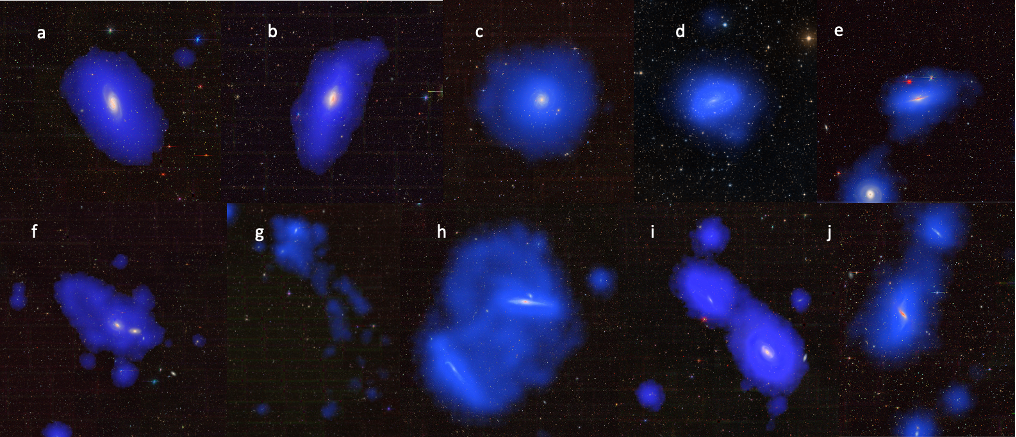FEASTS
FEASTS (FAST Extended-Atlas-of-Selected-Targets Survey) targets HI-richest galaxies in the Local Volume. It takes advantage of the high sensitivity and low side-lobe of FAST (Five-hundred-meter Aperture Spherical radio Telescope) in China, and aims to map the extended and low-surface density HI, which is typically missed in interferometric observations.
The sample is an almost HI-flux-complete sample of 55 galaxies. These galaxies all have extended HI disks that can be relatively well resolved by FAST's beam of ~3 arcmin (Wang et al. 2025). The observation uses the fast-OTF mode with speed equivalent to drift, and covers the same field multiple (>=6) times to reduce the contamination from RFI and other artifacts. The moment-0 images reach a typical 3-sigma depth of 5e17 cm^-2 (assuming 20 km/s line width).
More information on the team, sample selection, on-going projects, and publication can be found in the wiki page. All the data of the observed 55 galaxies has been released on the Data Release Page. If you have any questions, please email Jing Wang.

FEASTS studies the evolution of Local Volume galaxies with grand HI disks. The major science goals include but are not limited to the following:
- A uniform set of HI images taken with FAST for HI-richest galaxies in the Local Volume.
- First characterization of diffuse HI and HI clouds in the IGM/CGM of galaxies.
- A statistical measure of HI radial profiles in/above the CGM-disk interface.
- Modification to the star formation law and star formation theories.
- A new census of HI-rich dwarf satellites.
- Environmental effects that accrete or deplete gas in galaxies.